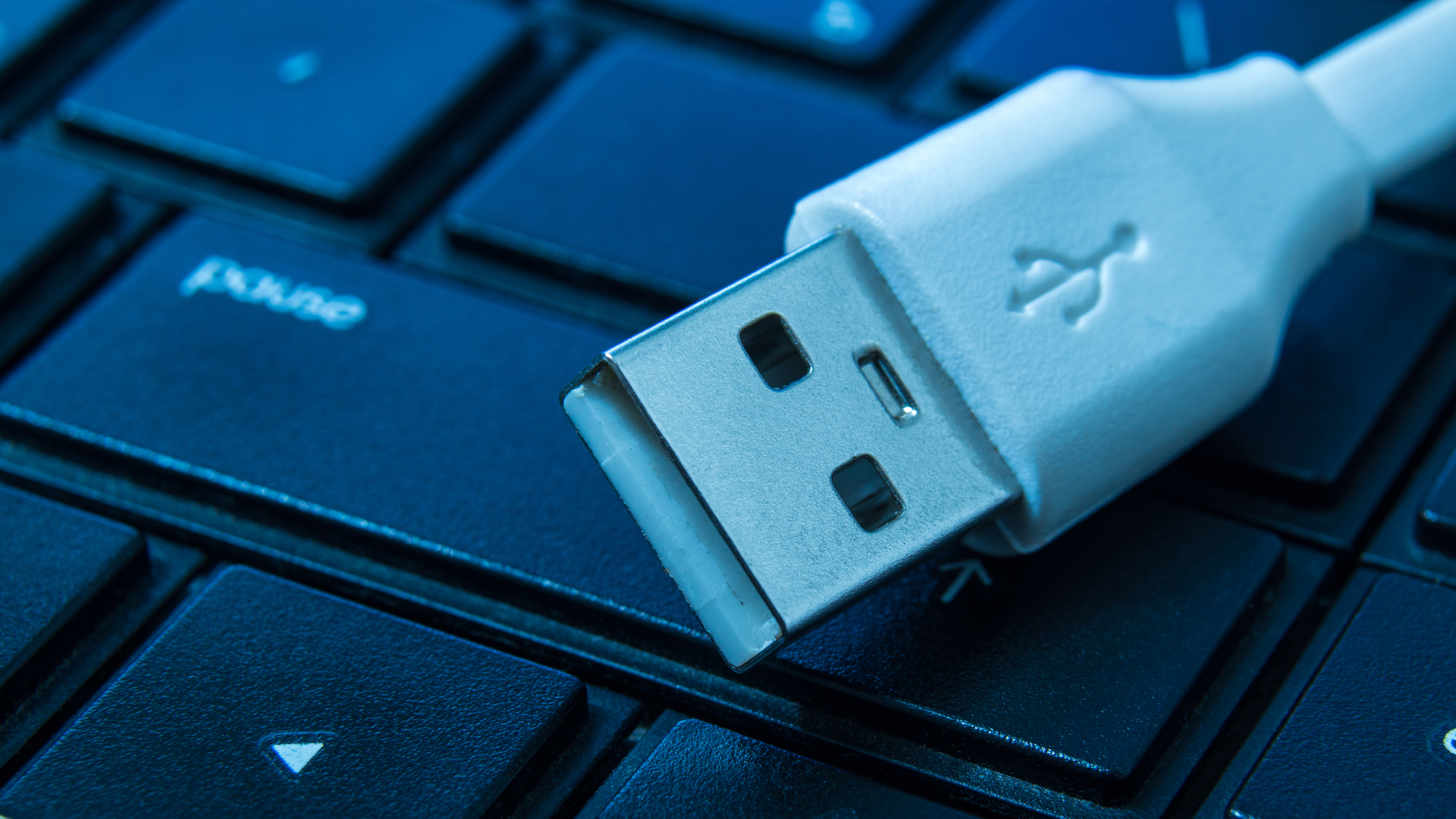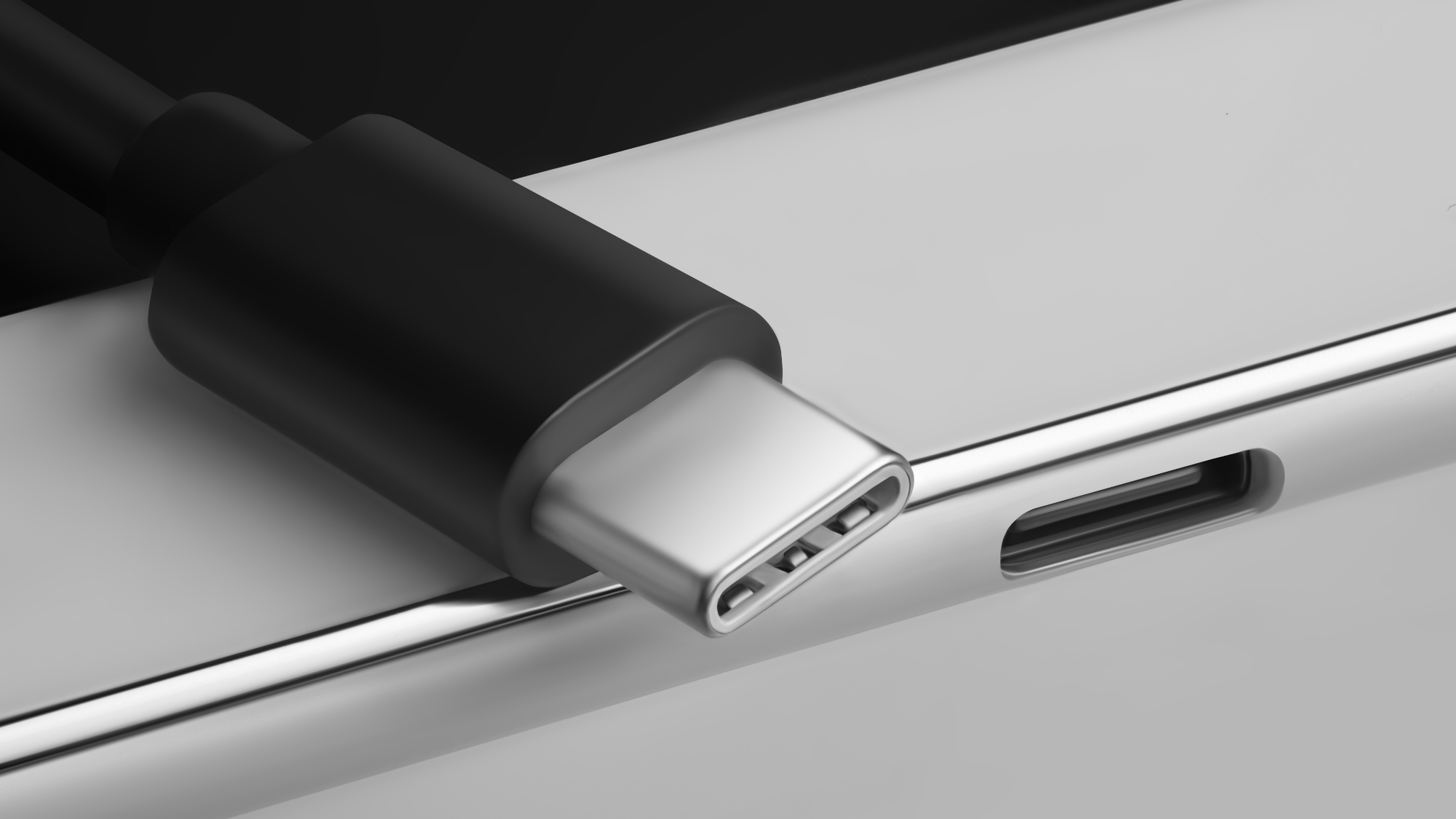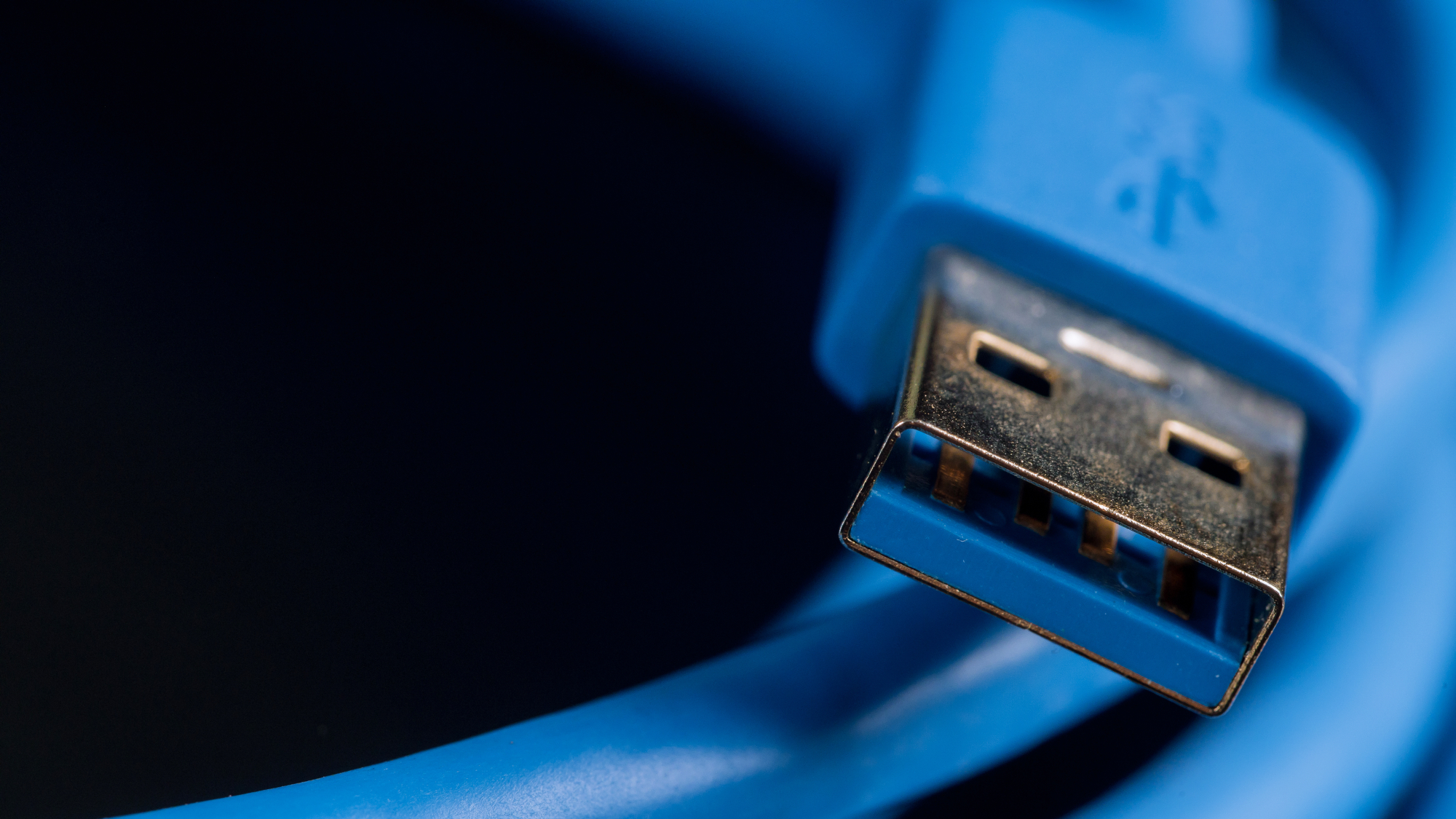USB-C vs. USB-A: What’s the difference?
USB-C vs. USB-A: What'due south the deviation?

A USB-A vs USB-C comparison is just what you demand if you're trying to effigy out the differences between these two ports. These are the ii most common connector types you lot'll find on modern PCs, for skilful reason: USB ports and cables let you to transfer data and ability between devices.
But while yous're probably familiar with USB ports, yous may not how USB-A and USB-C stack up — and that's important to know when it comes fourth dimension to buy the best laptop or all-time computer for your needs.
Superficially, USB-A and USB-C have different connector types. The erstwhile features a apartment, rectangular horizontal connector while the latter has a smaller rectangular connector with round edges.
These superficial differences denote that each type of USB cablevision has significantly different capabilities, and that's why it'south important to know the difference: and so you know whether your USB device is uniform with the port you lot want to plug it into, and what you can achieve with information technology.
Without farther ado, here's a accident-past-accident breakup of the big differences betwixt USB-C vs. USB-A.
What is USB-A?

USB-A ports and cables have been around for quite a while and every bit such, they are the ones most folks are familiar with. USB-A connectors have a rectangular horizontal port with pivot connectors on the bottom side. This pattern means the connexion just works if the cable is inserted correctly. If you lot try to insert the cable the wrong fashion, you'll come across resistance — don't force it!
USB-A has been going out of favor since the introduction of USB-C in 2014, but many modern devices however have at least i USB-A port. After all, there still are millions of peripherals and devices that crave a USB-A connection. This is the main reason USB-A won't completely go away anytime soon, despite information technology being an older connectedness type.
What is USB-C?

USB-C (or USB Blazon-C) is slowly becoming the standard port for consumer devices. Almost every new laptop, tablet or phone has USB-C connectivity. This is considering the connection type fixes many of the problems associated with USB-A. It also has many features that surpass its predecessor.
USB-C ports are smaller and thinner than USB-A. Considering of the connector's symmetrical design, you don't need to worry most which manner yous insert the cable into a port (thank goodness). With an adaptor, USB-C is astern uniform with USB-A and with various connection types, including HDMI.
Support for Power Delivery lets y'all charge large electronics like laptops via USB-C. SuperSpeed and SuperSpeed+ support (through USB 3.0 and college) allows for faster data transfer speeds. USB-C is also uniform with Thunderbolt 3 and Thunderbolt four, which is why you'll often run across laptops and desktops with combo USB-C/Thunderbolt four ports -- the port supports either cablevision.
What the heck is USB 3.0 and to a higher place?

USB iii.0 (aka USB iii.1), iii.2 and iv.0 are USB data protocols for USB connections and refer to the information formats the port can handle. In general, the higher the number the better, and you should be able to tell what version(s) your USB device supports by looking at the packaging and/or manual.
Put simply, the more advanced versions of the USB protocol allow for faster data and power transfer. Most of us volition never care plenty to tell the difference between USB 3.0 and USB iii.two, merely it's overnice to know how it all works.
USB 3.0 tin can reach transmission speeds of up to 5 Gigabits per 2d (or 5 Gbps), whereas USB three.one tin can accomplish up to ten Gbps. Nonetheless, USB 3.2 has two 10Gbps lanes and is thus capable of achieving 20Gpbs.
Both USB-A and USB-C ports can support USB 2.0 to iii.2, which makes the whole thing a chip confusing since a USB port has both a connector type (USB-C vs. USB-A, or rounded vs. rectangular) and a USB specification which reveals how capable it is.
However, the near recent USB four.0 spec tin reach up to 40Gbps and is simply available in USB-C course.
USB-A vs. USB-C: Which is better?
USB-C is undeniably the superior connection type due to its higher data transfer rates, ability to accuse large electronics and symmetrical connection port. This is why information technology is becoming the manufacture standard and will become ubiquitous in the well-nigh future. With that said, USB-A isn't completely useless. In some cases, you may need information technology over USB-C.
There are millions of devices that still use USB-A ports. Machines lacking USB-A ports, such as the new MacBook Pro 14-inch and Dell XPS 13 Plus, tin put you at a disadvantage if you don't have an adapter. Later on all, an external HDD or SSD with a USB-A connection won't exercise you any good if you can't connect it via USB-C. Also, USB-A designed for USB three.0 is withal plenty sufficient for everyday computing and even transferring large photos or videos, if you don't listen investing the time.
So while USB-C is objectively ameliorate than USB-A, USB-A notwithstanding has its place in the computing world and should exist effectually for several years to come.
Source: https://www.tomsguide.com/news/usb-c-vs-usb-a
Posted by: owensvibody.blogspot.com


0 Response to "USB-C vs. USB-A: What’s the difference?"
Post a Comment